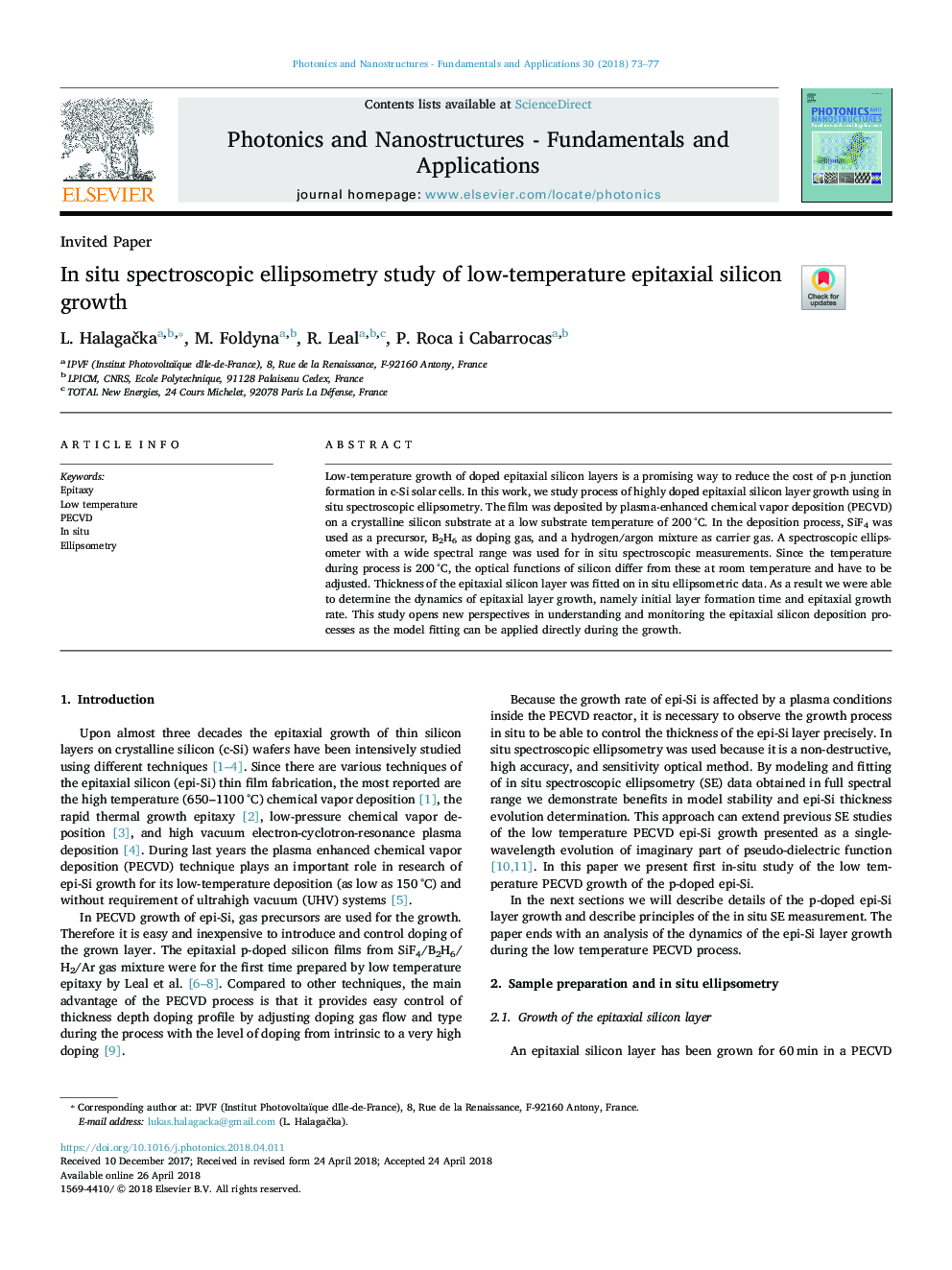| Article ID | Journal | Published Year | Pages | File Type |
|---|---|---|---|---|
| 7932766 | Photonics and Nanostructures - Fundamentals and Applications | 2018 | 5 Pages |
Abstract
Low-temperature growth of doped epitaxial silicon layers is a promising way to reduce the cost of p-n junction formation in c-Si solar cells. In this work, we study process of highly doped epitaxial silicon layer growth using in situ spectroscopic ellipsometry. The film was deposited by plasma-enhanced chemical vapor deposition (PECVD) on a crystalline silicon substrate at a low substrate temperature of 200â¯Â°C. In the deposition process, SiF4 was used as a precursor, B2H6 as doping gas, and a hydrogen/argon mixture as carrier gas. A spectroscopic ellipsometer with a wide spectral range was used for in situ spectroscopic measurements. Since the temperature during process is 200â¯Â°C, the optical functions of silicon differ from these at room temperature and have to be adjusted. Thickness of the epitaxial silicon layer was fitted on in situ ellipsometric data. As a result we were able to determine the dynamics of epitaxial layer growth, namely initial layer formation time and epitaxial growth rate. This study opens new perspectives in understanding and monitoring the epitaxial silicon deposition processes as the model fitting can be applied directly during the growth.
Related Topics
Physical Sciences and Engineering
Materials Science
Electronic, Optical and Magnetic Materials
Authors
L. HalagaÄka, M. Foldyna, R. Leal, P. Roca i Cabarrocas,
